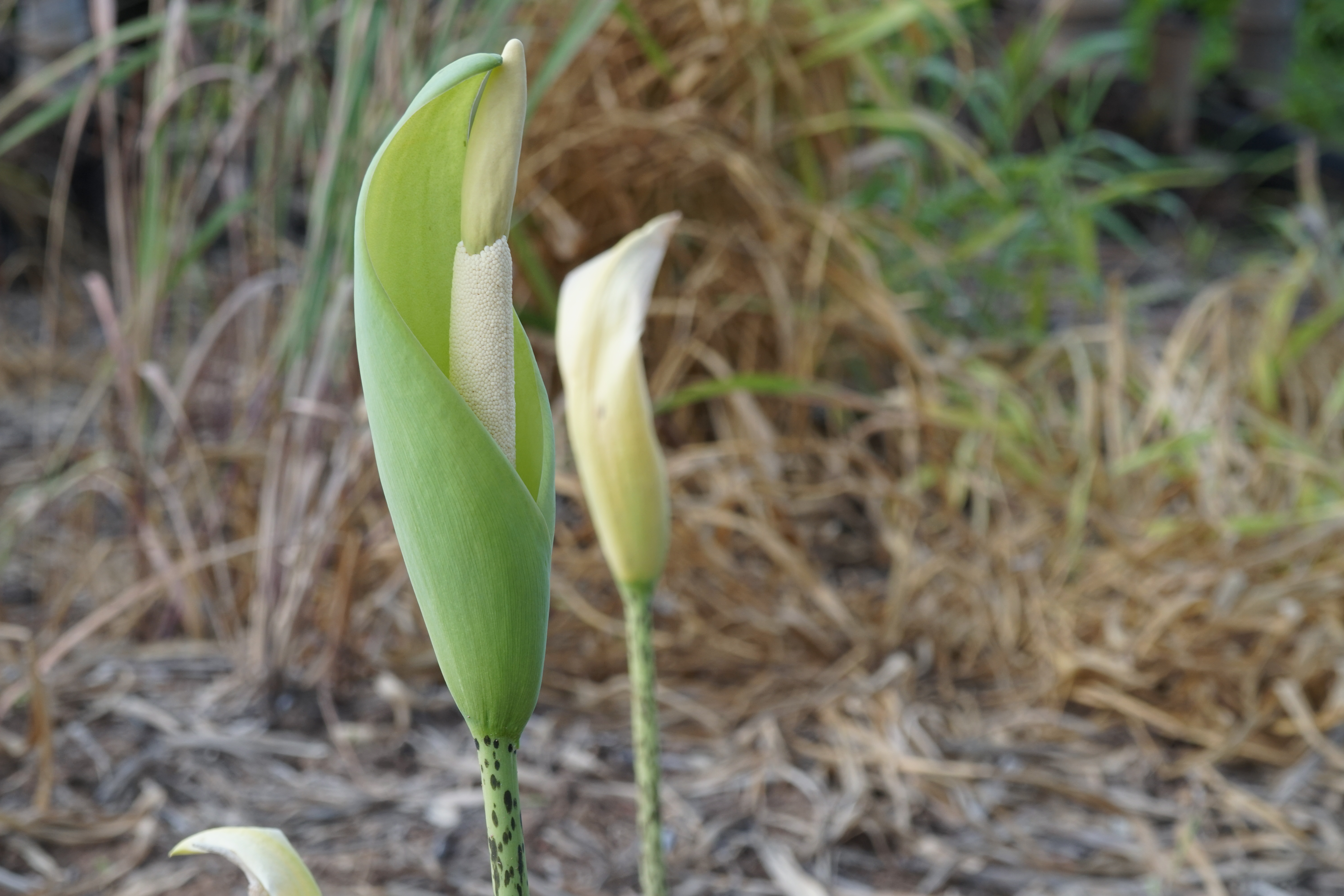Amorphophallus yunnanensis
(Amorphophallus yunnanensis)

Description
Amorphophallus yunnanensis (dian mo yu) is a flowering plant species native to forests and thickets, at altitudes of 100–3300 meters, in Guangxi, Guizhou, and Yunnan provinces in China, as well as Laos, and northern Thailand and Vietnam. Its tuber is dark brown, up to 13 cm in diameter, and weigh up to 500 grams. The leaf is solitary, 6–35 cm, grayish green, covered with pale pinkish spots. The inflorescence is solitary, 13–60 cm in height and 1–2 cm in diameter at its base. Berries are initially green, then turning blue and finally violet. Amorphophallus (from Ancient Greek amorphos, "without form, misshapen" + phallos, "penis", referring to the shape of the prominent spadix) is a large genus of some 200 tropical and subtropical tuberous herbaceous plants from the Arum family (Araceae), native to Asia, Africa, Australia and various oceanic islands. A few species are edible as "famine foods" after careful preparation to remove irritating chemicals. The genus includes the Titan arum (A. titanum) of Indonesia, which has the largest inflorescence of any plant in the genus, and is also known as the 'corpse flower' for the pungent odour it produces during its flowering period, which can take up through seven years of growth before it occurs. These small to massive plants grow from a subterranean tuber. Amorphophallus tubers vary greatly from species to species, from the quite uniformly globose tuber of A. konjac to the elongated tubers of A. longituberosus and A. macrorhizus to the bizarre clustered rootstock of A. coaetaneus. From the top of this tuber a single leaf, which can be several meters across in larger species, is produced atop a trunk-like petiole followed, on maturity, by a single inflorescence. This leaf consists of a vertical leaf stalk and a horizontal blade, which may consist of a number of small leaflets. The leaf lasts one growing season. The peduncle (the primary flower stalk) can be long or short. As is typical of the Arum family, these species develop an inflorescence consisting of an elongate or ovate spathe (a sheathing bract) which usually envelops the spadix (a flower spike with a fleshy axis). The spathe can have different colors, but mostly brownish-purple or whitish-green. On the inside, they contain ridges or warts, functioning as insect traps.
Taxonomic tree:







